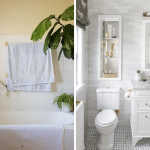
Pea gravel is a versatile and attractive landscaping option that is growing in popularity. Its small, rounded stones are perfect for various applications, from pathways to driveways and even garden beds. However, making a few simple mistakes can lead to inefficient use and wasted time, energy, and money. This article will examine three common pea gravel mistakes you should avoid to maintain a beautiful and functional landscape.
1. Improper Installation
One of the most crucial steps to ensuring long-lasting and attractive pea gravel is proper installation. Many homeowners make the mistake of simply pouring pea gravel onto a surface without considering the necessary steps for creating a sturdy and well-draining foundation. To avoid an uneven, sinking, and difficult-to-maintain area, follow these steps:
- Prepare the area by removing grass, weeds, and any other debris.
- Dig 3-4 inches deep and level the surface.
- Lay a weed barrier fabric to prevent any unwanted growth and help with drainage.
- Add a 2-inch layer of crushed stone and compact it for proper base support.
- Pour the pea gravel and spread it evenly using a rake.
By following these steps, your pea gravel area will have a durable and functional foundation that is able to withstand various weather conditions and stay attractive.
2. Using the Wrong Amount of Pea Gravel
Another common mistake often made by homeowners involves the amount of pea gravel used. Insufficient gravel can lead to a thin and unattractive surface that exposes the underlying base, whereas excessive gravel can cause instability and difficulty in walking or maneuvering vehicles. To ensure proper coverage, get in touch with a supplier of gravel in Alpharetta to make sure you get the exact amount needed for your specific project.
3. Failing to Maintain Borders
Pea gravel is notorious for spreading beyond its intended boundaries if not properly contained. Creating borders for your pea gravel areas is essential to prevent gravel from migrating into surrounding grass or garden beds. There are several materials you can use to create attractive and effective borders, such as wood, metal, concrete, or even larger stones. Regular maintenance of these borders will help ensure that your pea gravel stays in place and remains an attractive design feature in your landscape.
In conclusion, avoiding these three common pea gravel mistakes will lead to a beautiful, functional, and easy-to-maintain landscape feature. Investing time in proper installation, calculating the right amount of pea gravel, and maintaining borders will result in a landscape that not only looks fantastic but is also enjoyable to use.





